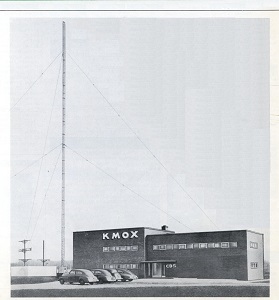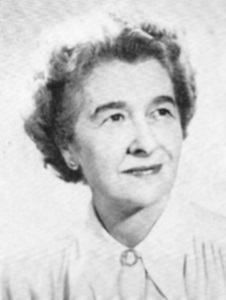Radio Articles
Opening of WIL’s New Home is Set For Early May
A palm garden with promenades, inviting lounges and chairs surrounding a cozy bungalow – an atmosphere diffusing friendliness and comfort, will be the new home of Station WIL atop Hotel Melbourne at Grand and Lindell boulevards.
While WIL is now broadcasting from Hotel Melbourne its new habitat is not yet finished. However, the work is being rushed to completion for the formal opening the first week in May. The station’s programs are being broadcast by remote control from the City Club Building, Eleventh and Locust streets, but within several weeks even the big antenna will be transferred to the Melbourne roof.
The bungalow, which will be the studio of WIL, will contain four large rooms. Two will be broadcasting rooms, one a reception room for artists and the fourth the rendezvous for visitors. Extending completely across one side of the building the rendezvous will be separated from the broadcasting studios by double-thickness plate glass which will be sound proof, but will permit visitors to look on as programs are being broadcast.
A Wicks’ pipe organ will be installed. At present, WIL’s new organist, Bill Blanchard, is broadcasting from the Wicks’ Organ Company’s studio at 3680 Lindell boulevard. These are test programs to determine the proper construction of an organ to be built for the new studio.
Blanchard, recognized as one of the best organists in the Middle West, is only 22 years old. His home is in Greencastle, Ind., where his father is dean at De Pauw University. Blanchard was a student under Van Denman Thompson of the De Pauw University School of Music and played the organ at the College Avenue Methodist Church in his home city for five years. Later he was director of Bill Blanchard’s Old Gold Serenaders, an eleven-piece orchestra which gained wide popularity through Indiana and Kentucky.
By arrangements with “The Star,” WIL will broadcast this newspaper’s daily market reports, sports bulletins and news flashes in the future. Plans are for other features to be furnished at a later date.
(Originally published in the St. Louis Star 4/20/1928).
 Under construction for over a year, the new KMOX transmitter will be dedicated April 7 [1947] with a special broadcast at 6:00 P.M. Dr. Frank Stanton, President of the Columbia Broadcasting System, and other CBS officials, together with leading citizens from Illinois and Missouri will attend the dedication broadcast to be followed by a special edition of the “Land We Live In.”
Under construction for over a year, the new KMOX transmitter will be dedicated April 7 [1947] with a special broadcast at 6:00 P.M. Dr. Frank Stanton, President of the Columbia Broadcasting System, and other CBS officials, together with leading citizens from Illinois and Missouri will attend the dedication broadcast to be followed by a special edition of the “Land We Live In.” One of the first large broadcasting stations to be established in the west was KSD of the St. Louis Post-Dispatch, which went on the air June 26, 1922, (sic) and since that time has built up and maintained an unusually high reputation among listeners in all sections of the United States.
One of the first large broadcasting stations to be established in the west was KSD of the St. Louis Post-Dispatch, which went on the air June 26, 1922, (sic) and since that time has built up and maintained an unusually high reputation among listeners in all sections of the United States. Slated by his parents to be a Baptist minister, Gil Newsome, after a year’s study in that direction, switched his course to a career that was one day to bring him the greatest tribute ever paid to any disc jockey in America. That tribute, given to Gil on his fifth anniversary with Station KWK, St. Louis, in May of 1950, brought Gil such honors as a loving cup presented on behalf of St. Louis’ 100,000 teenagers, a cake huge enough to feed the 200 studio guests present, a special citation from the Mayor, and congratulations from sixty-five great names in the music business.
Slated by his parents to be a Baptist minister, Gil Newsome, after a year’s study in that direction, switched his course to a career that was one day to bring him the greatest tribute ever paid to any disc jockey in America. That tribute, given to Gil on his fifth anniversary with Station KWK, St. Louis, in May of 1950, brought Gil such honors as a loving cup presented on behalf of St. Louis’ 100,000 teenagers, a cake huge enough to feed the 200 studio guests present, a special citation from the Mayor, and congratulations from sixty-five great names in the music business. It’s seldom that an amateur who turns to the professional ranks succeeds on the first attempt—unless the amateur is as gifted as Mary Lee Taylor.
It’s seldom that an amateur who turns to the professional ranks succeeds on the first attempt—unless the amateur is as gifted as Mary Lee Taylor.
You must be logged in to post a comment.